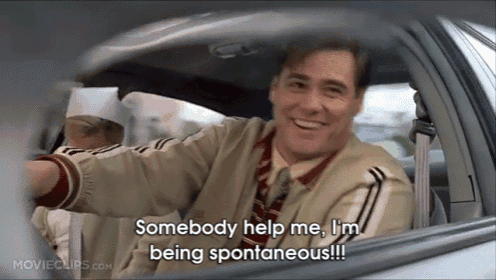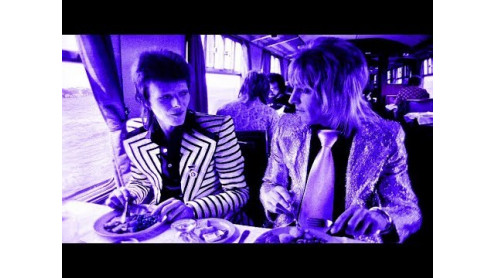
Mick Champayne | Life After Privacy02.04.2019
Growing up, my mother had a best friend who lived in another city. And we’re talking sharing-every-little-intimate-detail best friend. Every morning with her coffee, she’d call her friend to give the play-by-play of the previous evening, unloading embarrassing and mortifying stories of her kids. And like most teenagers, I was horrified at this invasion of my privacy.
I grew up in the late 90s, where the latest tech was beepers with Caller ID. But imagine being a 13-year-old today, and googling yourself to find you already exist online. It was bad enough my mom sharing with one person; I can’t imagine what teenage angst I would’ve been filled with had it been on a public platform. It reminds me of the main character of “The Truman Show”, who’s whole life was based on a complete invasion of privacy as he was the unwitting star of a reality TV show, with hidden cameras following his every move. Like Truman, Gen Z kids have had their lives commoditized into content. From sonograms to temper tantrums, intimate details of their lives have been shared in a social landscape. Even if their parent isn’t a chronic oversharer, there are troves of data, like school reports and track meet scores, for Google to scrape and inform their identity.

Marketers and big-data algorithms constantly track our every move. How many times have you sworn you were served up an ad because Instagram was listening?
But, spoiler alert – we’re all living in a “Truman Show” reality. There’s a saying, “If the product is free, you're the product.” We’ve all given up a lot of our personal data, sometimes for convenience and sometimes unknowingly. And like the audience tuning in to watch Truman, marketers and big-data algorithms constantly track our every move. How many times have you sworn you were served up an ad because Instagram was listening?
At SXSW this year, qualitative researcher and futurist Amy Webb made a bold statement by announcing “Privacy is dead.” Everything we do, generates data that is then mined, refined, productized and monetized. At face value, that sounds rather bleak and dystopian. But she says it’s not as bad as you may think. As founder of Future Today Institute, she researches the impacts and opportunities emerging technology and trends present.
One of the key trends Webb suggests we start paying close attention to is biometrics scanning. The field of biometrics uses our unique human characteristics to digitally identify a person. The most common forms are already seamlessly blended into our technology and lives, with fingerprint scanning and facial recognition. Like Apple’s iPhone X, which projects 30,000 infrared dots onto a user's face to authenticate him/her, so he/she can unlock the phone.
Technology is becoming more and more sophisticated, exploring and incorporating other metrics like behaviors, gestures, and emotions.
As designers working with technology, we regularly think about “the future.” But oftentimes we think very linearly, and it is easy to miss the areas just outside our field of vision. We are most impactful when we can zoom out, connect adjacent trends and think of the broader implications. So, with biometrics scanning, technology is becoming more and more sophisticated, exploring and incorporating other metrics like behaviors, gestures, and emotions. Layered on top of the other data collected, our unique features will not only recognize who we are, but our emotional state and frame of mind.
To put that into a real world context, athleisure brand lululemon has begun speculating on the future of apparel at the confluence of biometrics and wearable tech. Founder Chip Wilson predicts access to all of this data will lead to better health and wellness resulting in “superb bodies,” and eventually we’ll all be wearing Olympic-style Lycra outfits that change color depending on our mood. And to extrapolate on that possible future further, he predicts that in 15 years, we’ll implant tracking technology directly into our bodies, providing even more comprehensive biometric data. That continuous and detailed stream will inform what our bodies need to stay healthy, which will in turn inform our shopping decisions. And for marketers, access to all this data will make their job a walk in the park: optimizing advertisements and tailoring product recommendations will be incredibly accurate and compelling to consumers.

Autonomous vehicles are another trend adjacent to biometrics. Imagining a probable future of driverless cars and ride services, motor company Kia debuted its Real-time Emotion Adaptive Driving System (R.E.A.D.) at CES this year. They’ve developed emotionally intelligent AI that literally reads the room: the cabin can detect stress levels via biosensors and cameras that monitor facial expressions, heart rate and electrodermal activity, and creates a more relaxing environment through lighting and music. In anticipation of a more captive audience, marketers could take the opportunity to sell you more things, and if you’re in a good mood, you might be more receptive to what they’re selling.
What will privacy mean in the future? Should you have a right to keep your emotions, mental state and other biometric details private? Is it possible to have a more holistic and wholesome relationship between consumer and marketer?
As we see the rise of data-oriented companies and services, privacy as we’ve known it has begun to change. One positive outcome of the increasing availability of data opens alternative routes to ensuring trust and transparency in products for consumers – like the new GDPR regulations that are designed to give EU citizens more control over their personal information.
It’s important to remember these new tech trends aren’t inherently bad – it’s more about how we use them, connect them, and ask the bigger, more philosophical questions. What will privacy mean in the future? Should you have a right to keep your emotions, mental state and other biometric details private? Is it possible to have a more holistic and wholesome relationship between consumer and marketer? The opportunity here is to start thinking strategically, start doing the work, start having discussions, and stop being a passive member in the audience.

see also
- Life in a Post-Soviet Housing Project Now the Subject of a Video Game
News
Life in a Post-Soviet Housing Project Now the Subject of a Video Game
- Polish design is the honorary guest at the 12th Vienna Design Week

News
Polish design is the honorary guest at the 12th Vienna Design Week
- "Fall Please": Tricky Premieres New Music Video Ahead of Album Release
News
"Fall Please": Tricky Premieres New Music Video Ahead of Album Release
- Spike Lee: Guerrilla Filmmaking

People
Spike Lee: Guerrilla Filmmaking
discover playlists
-
Andriej Tarkowski
 02
02Andriej Tarkowski
-
John Peel Sessions
 17
17John Peel Sessions
-
Papaya Films Presents Stories
 03
03Papaya Films Presents Stories
-
Paul Thomas Anderson
 02
02Paul Thomas Anderson
